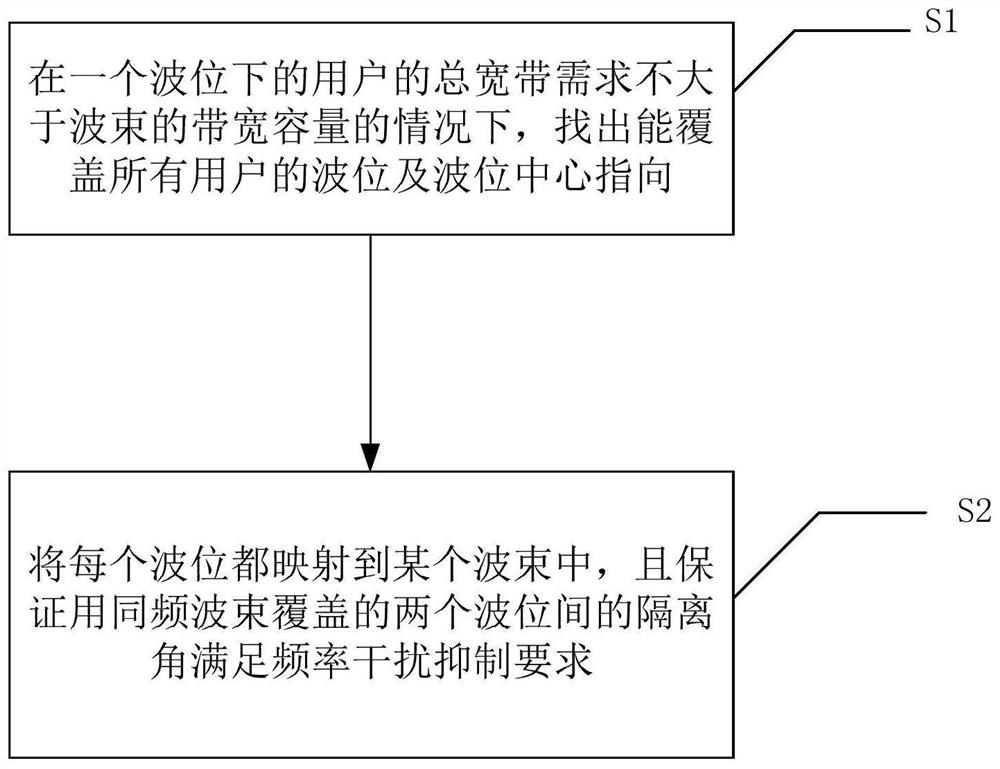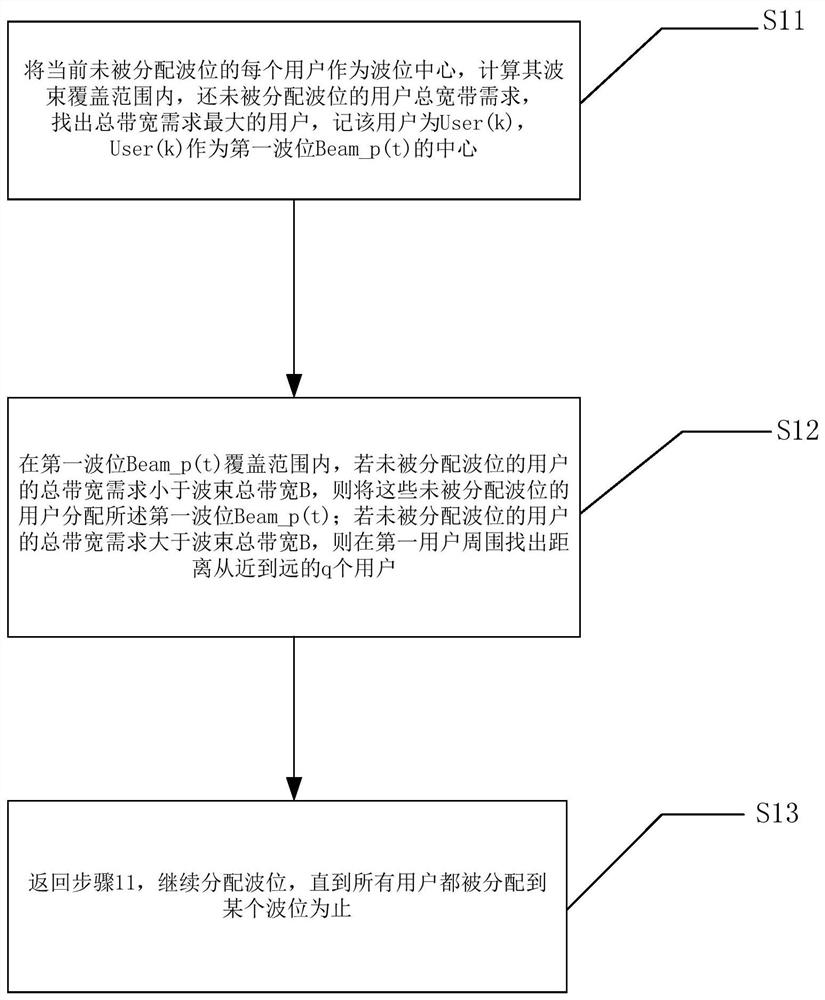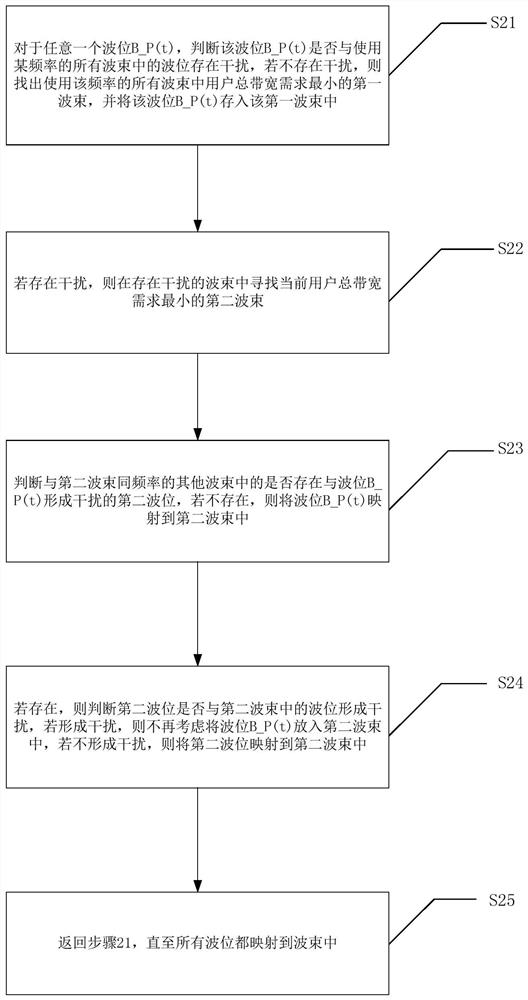A Phased Array Receiving Beam Resource Allocation Method for Satellite Communication
A technology for receiving beams and resource allocation, applied in the field of satellite communications, can solve problems such as unsatisfied services, and achieve the effect of avoiding frequency interference
- Summary
- Abstract
- Description
- Claims
- Application Information
AI Technical Summary
Problems solved by technology
Method used
Image
Examples
Embodiment
[0058] For a broadband communication satellite, a phased array antenna is used as its receiving antenna, and the number of receiving beams is 16. The satellite adopts 4 frequency multiplexing methods, each frequency has 4 beams, and the bandwidth of each beam is 100MHz. The current number of online users is 160. The service demand of each user is represented by the average bandwidth w. The value of w can be 1MHz, 2MHz, 6MHz or 16MHz. The average bandwidth demand of each user is generated randomly, and the average bandwidth demand of all users is formed. Vector W, W is a 160*1 vector. The 3dB beam width of each beam is 6 degrees (3dB width), the beam center isolation angle of the same color beam is required to be greater than or equal to 12 degrees to avoid frequency interference of the same frequency beam, and the ground coverage angle of the satellite is ±55°.
[0059] According to the usual service model of satellite communication, the satellite covers a channel, 80% of the...
PUM
 Login to View More
Login to View More Abstract
Description
Claims
Application Information
 Login to View More
Login to View More - R&D
- Intellectual Property
- Life Sciences
- Materials
- Tech Scout
- Unparalleled Data Quality
- Higher Quality Content
- 60% Fewer Hallucinations
Browse by: Latest US Patents, China's latest patents, Technical Efficacy Thesaurus, Application Domain, Technology Topic, Popular Technical Reports.
© 2025 PatSnap. All rights reserved.Legal|Privacy policy|Modern Slavery Act Transparency Statement|Sitemap|About US| Contact US: help@patsnap.com



